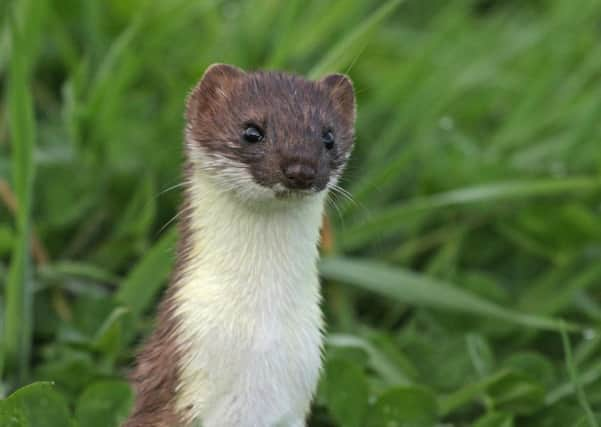COLUMN: The difference between weasels and stoats – one is weasel-ly identified, the other stoat-ly different


The colder winter months mean the leaves are off the trees and grass is not growing. Less vegetation makes it easier to see two of our most charismatic creatures: stoats and weasels.
Members of the same family as badgers and otters, they are quick, active hunters of small mammals. Normally hidden by hedgerows or long grass, this time of year you may have one of your best chances of seeing them here at Frampton Marsh.
Advertisement
Hide AdAdvertisement
Hide AdBut how do you know which is which? The traditional reply at this point is that weasels are weasel-ly identified. Whilst stoats are stoat-ly different! But to be serious, the main difference is in size. Stoats are by far the larger of the two. They are 25 to 32cm long, with a nine to 14cm tail. The body is brown on top, white underneath and the tail has a black tip. When they run they have a distinctive bounding action.
In comparison, weasels are tiny. Usually 12 to 20cm long and with only a short stubby tail. They have similar colours to stoats, but no black tip on the tail, which is a great way to tell the difference. The other way is when they run. Stoats bound, but weasels scurry along the ground.
The size difference between the two animals also affects what they hunt. Stoats like to hunt larger prey, rats and rabbits being among their favourites. Weasels go for mice and voles. They are actually so small that they can follow mice down their holes!
If you are lucky enough to see either a stoat or weasel, it will likely run away as soon as it realises you are there. But stand still for a while. Stoats particularly are very curious, and will often pop back out of cover again for a second look at you. You can make it even more likely they will return by making a kissing noise on the back of your hand. This sounds like a small animal in distress.
The other time of year you may get good views of stoats or weasels is in the summer, when the young animals leave their nest to learn how to hunt.
Comment Guidelines
National World encourages reader discussion on our stories. User feedback, insights and back-and-forth exchanges add a rich layer of context to reporting. Please review our Community Guidelines before commenting.